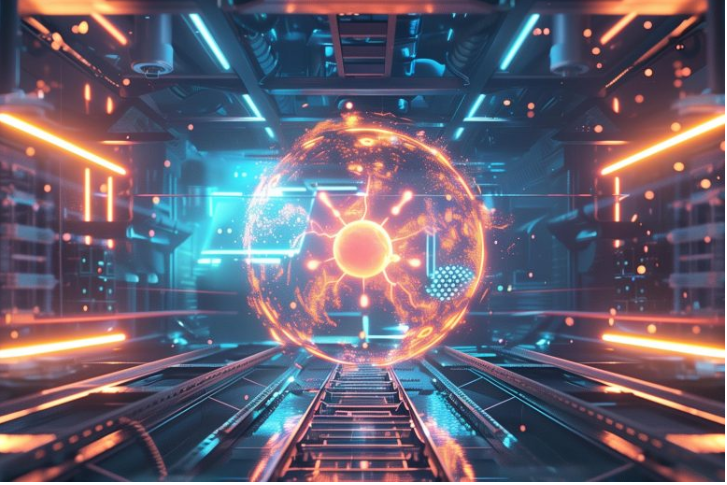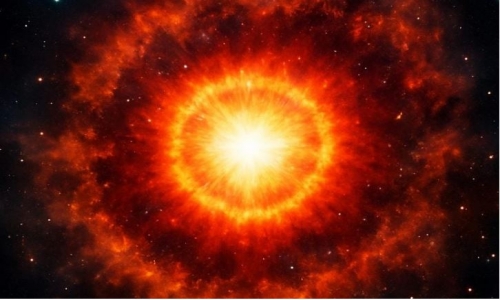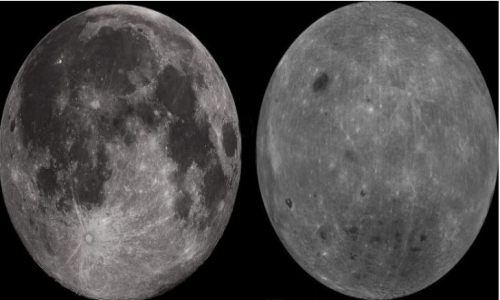


 2:8:46
2:8:46  2025-03-01
2025-03-01  539
539

A study finds that strong nuclear radiation enhances device efficiency.
Researchers have developed a battery capable of converting nuclear energy into electricity through light emission, according to a new study.
Nuclear power plants generate about 20% of the electricity in the United States and produce minimal greenhouse gas emissions. However, they also generate radioactive waste, which poses risks to human health and the environment, making safe disposal a significant challenge.
To address this, a team led by researchers from The Ohio State University designed a system that harnesses ambient gamma radiation to generate electricity. By combining scintillator crystals—high-density materials that emit light when exposed to radiation—with solar cells, they successfully converted nuclear energy into an electric output powerful enough to run microelectronics, such as microchips.
To test this battery, which is a prototype about 4 cubic centimeters small, researchers used two different radioactive sources, cesium-137, and cobalt-60, some of the most significant fission products that come from spent nuclear fuel. The battery was tested at Ohio State’s Nuclear Reactor Laboratory. The NRL supports student and faculty research, student education, and service to industry – it does not produce electrical power.
Performance and Potential Scaling
Their results showed that when cesium-137 was used, the battery generated 288 nanowatts. Yet with the much stronger isotope cobalt-60, the battery produced 1.5 microwatts of power, about enough to switch on a tiny sensor.
Although most power outputs for homes and electronics are measured in kilowatts, this suggests that with the right power source, such devices could be scaled up to target applications at or beyond the watts level, said Raymond Cao, lead author of the study and a professor in mechanical and aerospace engineering at Ohio State.
The study was recently published in the journal Optical Materials: X.
The researchers said these batteries would be used near where the nuclear waste is produced, such as in nuclear waste storage pools or nuclear systems for space and deep sea exploration – they aren’t designed for public use. Fortunately, although the gamma radiation utilized in this work is about a hundred times more penetrating than a normal X-ray or CT scan, the battery itself does not incorporate radioactive materials, meaning it is still safe to touch.
“We’re harvesting something considered as waste and by nature, trying to turn it into treasure,” said Cao, who also serves as the director of Ohio State’s Nuclear Reactor Lab.
Optimizing Crystal Design for Efficiency
According to the study, the team’s battery may also have experienced an increase in power due to the makeup of the prototype scintillator crystal the team opted to use. They found that even the shape and size of the crystals can impact the final electrical output, as a larger volume allows it to absorb more radiation and convert that extra energy into more light. A larger surface area also helps the solar cell generate power.
“These are breakthrough results in terms of power output,” said Ibrahim Oksuz, co-author of the study and a research associate in mechanical and aerospace engineering at Ohio State. “This two-step process is still in its preliminary stages, but the next step involves generating greater watts with scale-up constructs.”
Since batteries of this type would most likely end up in environments where high levels of radiation already exist and aren’t easily accessible to the public, these long-lasting devices wouldn’t pollute their surroundings. Even more significantly, they could also operate without the need for routine maintenance.
Scaling this technology up would be costly unless these batteries could be reliably manufactured, said Cao. Further research is needed to assess the batteries’ usefulness and limitations, including how long they might last once safely implemented, said Oksuz.
“The nuclear battery concept is very promising,” he said. “There’s still lots of room for improvement, but I believe in the future, this approach will carve an important space for itself in both the energy production and sensors industry.”
Reality Of Islam |
|

Astronomers

Cosmologist

Scientists
 9:3:43
9:3:43
 2018-11-05
2018-11-05
10 benefits of Marriage in Islam
 7:5:22
7:5:22
 2019-04-08
2019-04-08
benefits of reciting surat yunus, hud &
 9:45:7
9:45:7
 2018-12-24
2018-12-24
advantages & disadvantages of divorce
 11:35:12
11:35:12
 2018-06-10
2018-06-10
 6:0:51
6:0:51
 2018-10-16
2018-10-16
 8:30:23
8:30:23
 2022-03-03
2022-03-03
 3:18:29
3:18:29
 2022-12-24
2022-12-24
 7:6:7
7:6:7
 2022-03-21
2022-03-21
the happy life of mankind requirement
 6:36:36
6:36:36
 2022-01-25
2022-01-25
 6:14:17
6:14:17
 2018-06-21
2018-06-21
 3:42:22
3:42:22
 2021-12-24
2021-12-24
 1:38:41
1:38:41
 2021-12-08
2021-12-08
 5:41:46
5:41:46
 2023-03-18
2023-03-18
| LATEST |